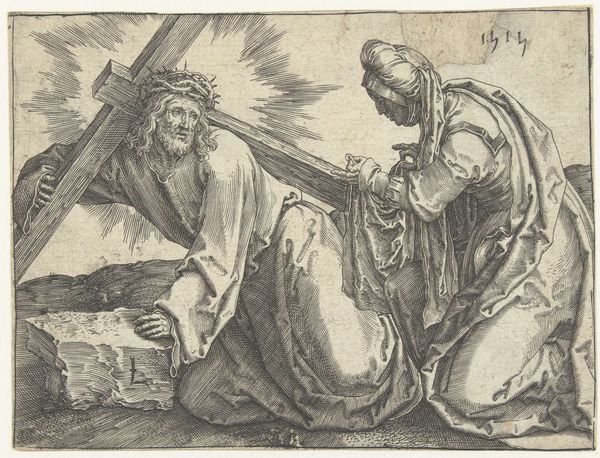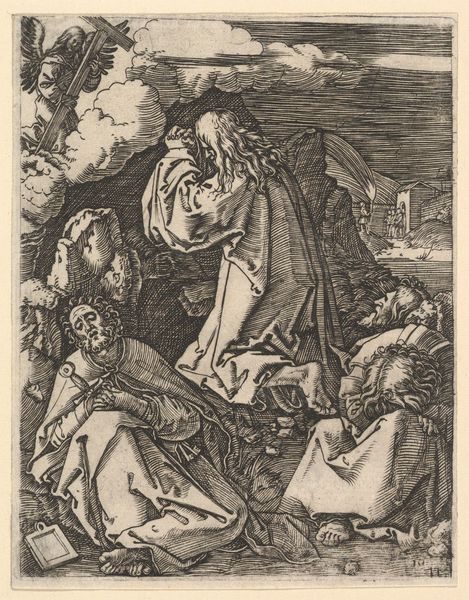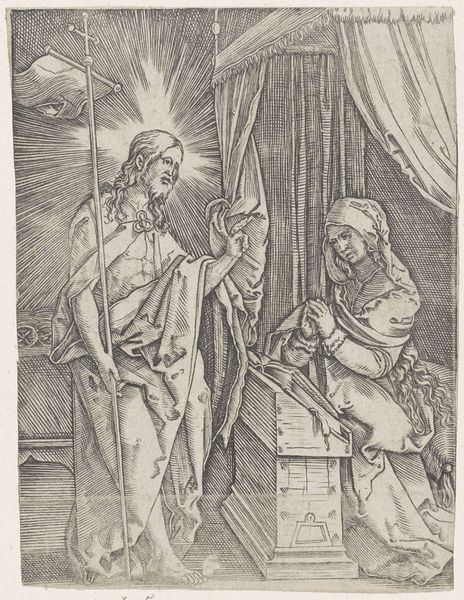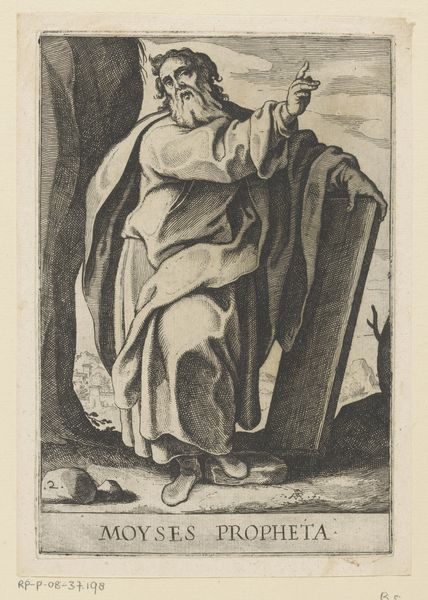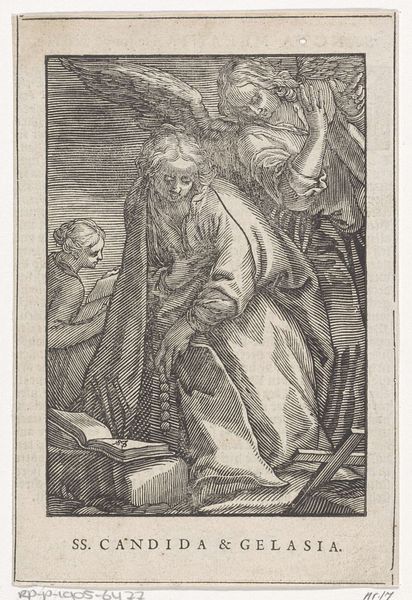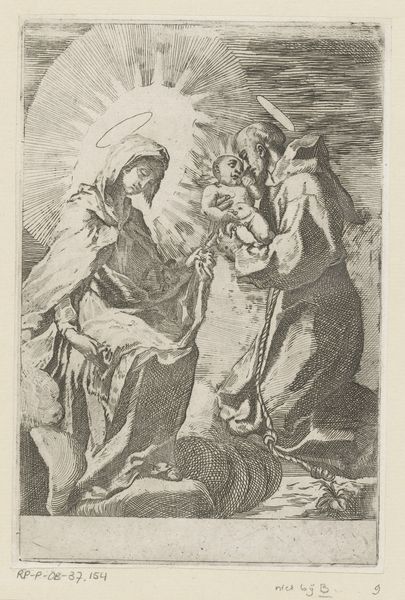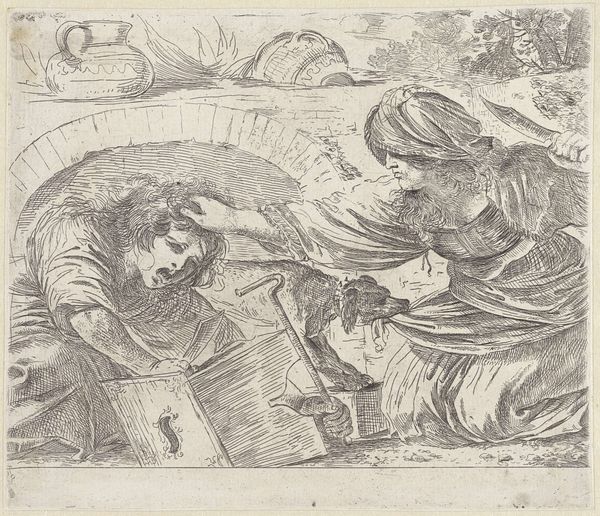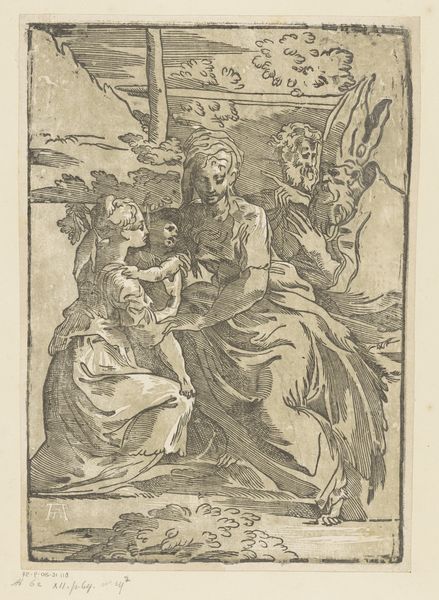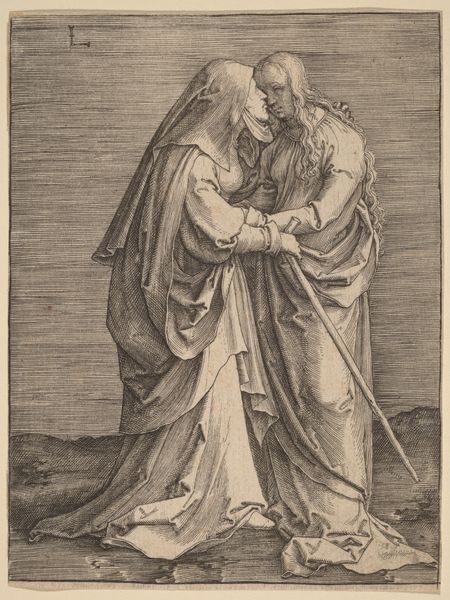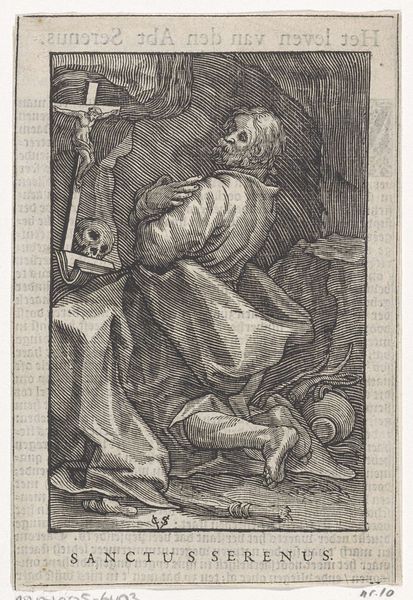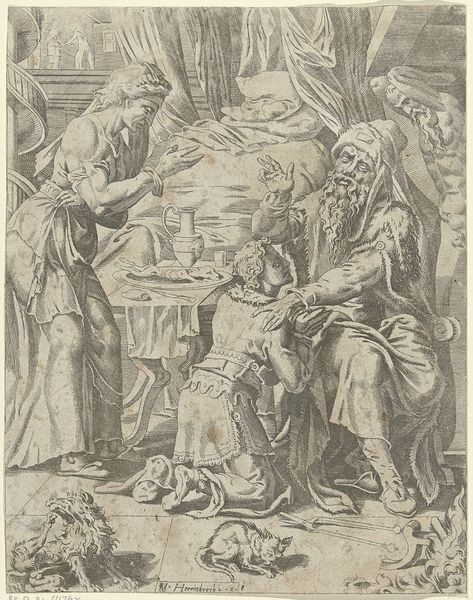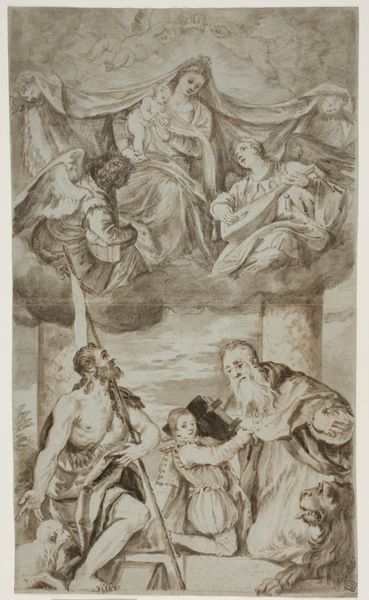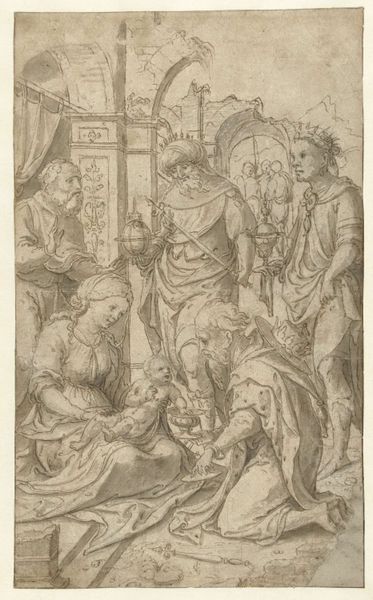
drawing, print, paper, engraving
#
drawing
#
medieval
# print
#
paper
#
northern-renaissance
#
italian-renaissance
#
engraving
Dimensions: 77 × 103 mm (image/plate); 80 × 106 mm (sheet)
Copyright: Public Domain
Curator: Here we have Lucas van Leyden’s engraving, Christ Carrying the Cross, created around 1515. The fine lines and detail are extraordinary, aren’t they? Editor: Yes, but my initial impression is one of overwhelming somberness and suffering, even despair. The image is awash in grief, in the sheer physical burden made manifest. Curator: Indeed. Van Leyden masterfully employs the engraving technique to articulate texture and form. Notice how he varies the density of lines to create a sense of depth and shadow. Consider the cross-hatching, for instance, that defines the folds in Christ’s robe and the rough texture of the stone he kneels upon. The medium becomes a means to emphasize the weight and materiality of the depicted objects. Editor: Absolutely, and the materiality serves a purpose beyond aesthetics. Think about the historical context, though. The early 16th century was a time of immense social upheaval. The image speaks not only to Christ’s individual suffering, but mirrors the collective anguish and religious intensity permeating Europe during the rise of the Reformation. It's a pointed narrative about those who bear the burdens of society’s oppressions, which remains ever resonant. Curator: I concur, but it's also worthwhile noting how the composition directs our eye. The diagonal line of the cross bisects the image, creating a dynamic tension. Furthermore, the use of radiating lines emanating from behind Christ's head suggests divine light, contrasting with the dark and torturous event. These are classical formal techniques. Editor: While such techniques effectively portray religious experience, let’s acknowledge they are also tools of control, serving to idealize suffering and thus legitimize societal power structures. Is not the woman offering the cloth equally crucial? She reflects an element of resistance, empathy. Curator: It’s the formal interplay between line and shadow that underscores meaning. Observe how van Leyden manipulates the contrast to convey both the physical strain on Christ and the emotional weight of the moment. It all comes together to give an experience to the viewer. Editor: Perhaps...still, the act of bearing witness, as seen in the woman's face and outstretched cloth, represents an equally powerful commentary on the human response to injustice. Considering religious narratives are deeply interwoven with historical realities, Leyden may be hinting towards the complex and ever-present issues surrounding oppression. Curator: A fruitful dialogue; thank you for those observations. I have come to see more about the historical realities of the piece as a result. Editor: And I understand that we must first be capable of deciphering visual form to interpret deeper historical realities. Thank you!
Comments
No comments
Be the first to comment and join the conversation on the ultimate creative platform.
